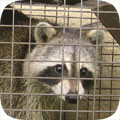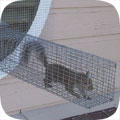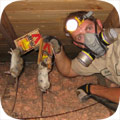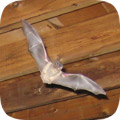- chehalis@wildlifeanimalcontrol.com
Call 24/7 for a free quote:
360-539-8266
Chehalis Wildlife Animal Control
Professional Wildlife Removal Company Servicing Chehalis, WA
If you have a problem with wildlife in your Chehalis home, your best option is to hire a company that specializes in Washington wildlife removal only. This is a specialty business, and regular pest control companies do not use the proper techniques to solve animal problems. I have spent many years reviewing Washington and Chehalis, and I recommend the following:
Wildlife Removal Olympia
Cell Phone: 360-539-8266
NOTE: If you have a dog or cat problem, call Lewis County Animal Services: 360-740-1290

Wildlife Removal Olympia specializes primarily in removing animals from attics of homes and buildings - this includes squirrels in attics, raccoons, and rats or mice in homes. Washington also has a documented problem with
bats in buildings, and Wildlife Removal Olympia is specially trained in bat removal. They also perform general wildlife trapping services, such as the capture and removal of skunks or opossums on the
property. Call 360-539-8266 to discuss your critter problem and schedule a same-day or next-day appointment. Click here to learn more about
what prices we charge in 2025.
When hiring a company to solve your wild animal problem, you want these features:
- Specializes in wildlife removal, not pest control
- Fully Washington and Lewis County licensed and insured
- Works 7 days per week (critters don't take weekends off)
- Performs full building inspections: enters and inspects attic
- Performs exclusion repairs, with guarantee against animal re-entry
- Offers cleanup of biohazardous wildlife waste
Wildlife Removal Olympia is a full-service Chehalis wildlife removal company. This is very different from a regular Chehalis pest control company. The pest control companies spray poison to kill insects. This is not at all
similar to wildlife removal. Wildlife Removal Olympia performs a full inspection of the home or property, and determines why the animal(s) are there, and if inside a building, how the animals got inside. All
animals (including rodents) are trapped and removed, or if possible, removed from the building using special exclusion devices. Once the animals are gone, preventative repairs are essential, and
cleanup is sometimes recommended.
 Chehalis wildlife trapping - it's not as simple as it may seem. It's illegal in Washington to trap without a license. Trap type is very important and there are many different types, bait is somewhat relevant, trap placement
is vital, and there are dozens of small things that are very important to know.
Safety is a concern. Then once the animal is trapped, it must be removed and dealt with in the proper manner according to Washington law. We offer Chehalis raccoon removal. Read more about how to get rid of raccoons.
Chehalis wildlife trapping - it's not as simple as it may seem. It's illegal in Washington to trap without a license. Trap type is very important and there are many different types, bait is somewhat relevant, trap placement
is vital, and there are dozens of small things that are very important to know.
Safety is a concern. Then once the animal is trapped, it must be removed and dealt with in the proper manner according to Washington law. We offer Chehalis raccoon removal. Read more about how to get rid of raccoons.
 Animals in attics - this is our specialty at Wildlife Removal Olympia. Many types of animals like to live in attics. This includes squirrels, raccoons, rats, mice, bats, birds, and even possums. Critters like to go into attics for a safe place to live
and raise their young. Removing animals from attics is very complex work, partly because of the presence of baby animals. If you need Chehalis squirrel removal, we can remove all the squirrels from your attic, and seal out any future ones. Read more about how to get rid of squirrels.
Animals in attics - this is our specialty at Wildlife Removal Olympia. Many types of animals like to live in attics. This includes squirrels, raccoons, rats, mice, bats, birds, and even possums. Critters like to go into attics for a safe place to live
and raise their young. Removing animals from attics is very complex work, partly because of the presence of baby animals. If you need Chehalis squirrel removal, we can remove all the squirrels from your attic, and seal out any future ones. Read more about how to get rid of squirrels.
 Rodent control must be done in a very specific way. First off, the most important thing is that all the openings that rats and mice can use to enter a house be sealed. Then all the rodents must be physically trapped and removed.
Never, ever use poison! Most Chehalis exterminators will just use this lazy poison technique to kill rodents, and it causes more harm than good - dead stinky rats, and it doesn't solve the problem. Call us for correct Chehalis rat removal. Read more about how to get rid of rats.
Rodent control must be done in a very specific way. First off, the most important thing is that all the openings that rats and mice can use to enter a house be sealed. Then all the rodents must be physically trapped and removed.
Never, ever use poison! Most Chehalis exterminators will just use this lazy poison technique to kill rodents, and it causes more harm than good - dead stinky rats, and it doesn't solve the problem. Call us for correct Chehalis rat removal. Read more about how to get rid of rats.
 Bat removal is a highly specialized task. Washington is known to have colonizing bats who often live in buildings. Bats love attics. If not removed, the colony can grow to a very large size over the years. The bat droppings are often corrosive and
cause health risks. The same goes for bird droppings on or in buildings. We perform Chehalis pigeon removal and bird control. But our specialty is Chehalis bat removal. We remove 100% of the bat colony and seal the building so that it's totally bat-proof. Read more about how to get rid of bats.
Bat removal is a highly specialized task. Washington is known to have colonizing bats who often live in buildings. Bats love attics. If not removed, the colony can grow to a very large size over the years. The bat droppings are often corrosive and
cause health risks. The same goes for bird droppings on or in buildings. We perform Chehalis pigeon removal and bird control. But our specialty is Chehalis bat removal. We remove 100% of the bat colony and seal the building so that it's totally bat-proof. Read more about how to get rid of bats.
 If you have animals inside a house, no job is complete without proper exclusion repairs. If you simply hire a Chehalis trapper who only removes the critters, then the problem will return. You need to hire a Chehalis wildlife control company that identifies 100% of the animal entry points
into your building, and seals them shut with professional repairs. In addition, in many cases animals have left waste or contamination behind, and you'll want a company that can provide professional cleaning services. Wildlife Removal Olympia does both.
If you have animals inside a house, no job is complete without proper exclusion repairs. If you simply hire a Chehalis trapper who only removes the critters, then the problem will return. You need to hire a Chehalis wildlife control company that identifies 100% of the animal entry points
into your building, and seals them shut with professional repairs. In addition, in many cases animals have left waste or contamination behind, and you'll want a company that can provide professional cleaning services. Wildlife Removal Olympia does both.
The above are just some of the services offered by Wildlife Removal Olympia. We also trap and remove animals that destroy lawns, such as moles, or digging animals. Sometimes animals like opossums will live under buildings, steal pet food, raid garbage cans, etc.
Read about how to get rid of opossums. Skunks commonly live under sheds or decks, and set up a den. We can trap and remove them without them spraying. Read about how to get rid of skunks. Wildlife Removal Olympia
also provides dead animal removal in Chehalis. If you need help with any other wildlife conflict, from a fox, beaver, groundhog, or any other critter, we can solve it. We also do Chehalis snake removal - most of the snakes in Washington are not venomous, but
call us if you want safe removal, or read about how to get rid of snakes in Chehalis. And remember, we are a private business, not Lewis County Animal Control Services, so if you have a dog or cat problem, call the County at 360-740-1290.
Lewis County animal services does not handle any wildlife issues.
Wildlife Removal Olympia
Cell Phone: 360-539-8266
Chehalis Pricing Info
Every wildlife removal situation is different, from the species of animals involved, the location of the animal inside a house or outside, the extent of repairs or cleanup, etc. It's impossible to give one-size-fits-all prices. Examples MIGHT include:Small Job: For example, a one-stop job to remove an animal in the yard: $100 on up
Medium Job: For example, getting critters out of your house with minor repairs: $300 on up
Large Job: For example, a project involving many service trips and complex work: $500 on up
Give us a phone call now and tell us about your wildlife issue and we will be able to give you a price estimate over the phone. If you're cool with it, we can schedule a same-day or next-day appointment if you like. Our prices are fair, and a good value because we do the job right, the first time.
Chehalis Wildlife Tip #1:
Methods to Get An Animal Out of The Tree
Homeowners in the United States are in huge trouble due to frequent attack of animals and rodents. These wild creatures make huge damage to the premises and can also spread harmful diseases to the humans and pets living around. There are so many types of wild animals that can be seen in the urban areas and they keep on frustrating the gardeners. If you are also in trouble due to such creatures; it is important to find some methods to get rid of them as soon as possible.
One of the biggest troubles with wild animals is that they keep on targeting fruit trees in the garden and yard area. If you don't not control their activities at right time, they may cause huge damage within few hours. Moreover, they may try to create dens in your premises to raise their babies safely. As wild animals often carry lots of harmful disease viruses, there is no point in tolerating them within your property. It is important to take immediate steps to protect your trees from wild animal attacks. Below we have highlighted few methods to get rid of these creatures as soon as possible so that your trees can stay healthy.
Pruning:
Critters are not able to eat things that are at great height from ground surface. Experts advise pruning trees at a distance of around 6 feet from the fences and buildings so that wild animals cannot find any way to reach to them. Although this technique is not possible in the smaller lots where homeowners often prefer to plant trees close to their structure, but the wider premises can be easily saved with this technique.
Using Deterrents:
There is no doubt to say that delicious fruits are reward for the critters and they find it like biggest motivation to invade your property. Even wild animals that are not good climbers can also scale the trunk of the tree and create shelter inside it. In order to stop their attacks, it is good to loosely wrap the metal flashing around the trunks and extend it at least for 4 feet height above the ground. Make sure the flashing is tight enough that animals cannot access the tree sheds. Some experts also recommend using baffles for this purpose as these umbrella shaped deterrents make it difficult for animals to climb the tree. It will help you to save your fruits from wild animals.
Create Barriers:
In order to protect your trees and fruits, get some potential barriers that can keep animals away from your premises. But before you pick any random product to create barriers, it is important to understand that rodents and squirrels are capable enough to gnaw the nettings made up of plastic material and birds can also peck through the tiny net openings. Moreover, nets are difficult to install on tall trees. Experts recommend using wire mesh for better protection. You can also take help from professionals to deal with the situations.
Chehalis Wildlife Tip #2:
Washington Wildlife Information:
Washington State bird: Willow goldfinch
State mammal: Olympic marmot, orca
State amphibian: Pacific tree frog
State fish: Steelhead trout
State insect: Green darner dragonfly
Washington State is one of the lesser-publicized states in the country, largely because it is out of the path of many natural disasters like tornados, hurricanes, and powerful 'Nor-Easter' storms. The state has a stunning sea on its upper western corner. This sea is named the Salish Sea, and it is an inlet of the Pacific Ocean filled with hundreds of islands and deep bays. There are over 100 animal species that rely on the sea for food and shelter. Beyond the sea, heading inland, the state is divided north to south by the Cascade Mountains. This is only one of several large mountain ranges in Washington. On the western side of the divide, the weather is typically mild with cooler, wet winters. The eastern side of the divide is very opposite. There are dry areas that are considered deserts, and a large semi-arid region on the west side is used primarily for agriculture.
The mountains in Washington are home to many large and small animals. The largest of these is the moose, which is rivaled only by grizzly bear in weight. Grizzlies are uncommon in the state, spotted only in the deepest parts of the Cascades. Their more common cousin, the black bear, is found in most of the region, and can be troublesome for people trying to keep birdfeeders up. The next creatures down the size chain are elk, cougars, and coyotes. Elk are herd animals, and they typically remain at the tops of mountains until winter snows drive them in to the valleys.
It is not the large animals that are problems in the state of Washington. This state did not escape the attention of pest critters like raccoons, skunks, woodchucks, pocket gophers, bats and opossums. Anyone living close to the forested areas of the state will see these opportunistic animals, and they will undoubtedly see a fair share of squirrels, rats, and mice, too.
The Salish Sea hosts just as many critters as do the mountains. In the sea, otters, whales, sea lions, seals, and blue heron are frequent visitors. Homeowners looking to live along the coast will eventually be exposed to the many land animals, like black bear, that come to enjoy the wealth of wildlife at the water's edge.
You can always call Wildlife Removal Olympia, any time of day, at 360-539-8266, for a price quote for Chehalis wildlife control services. I am confident that this is the best choice amongst wildlife removal companies in Chehalis, WA.







































